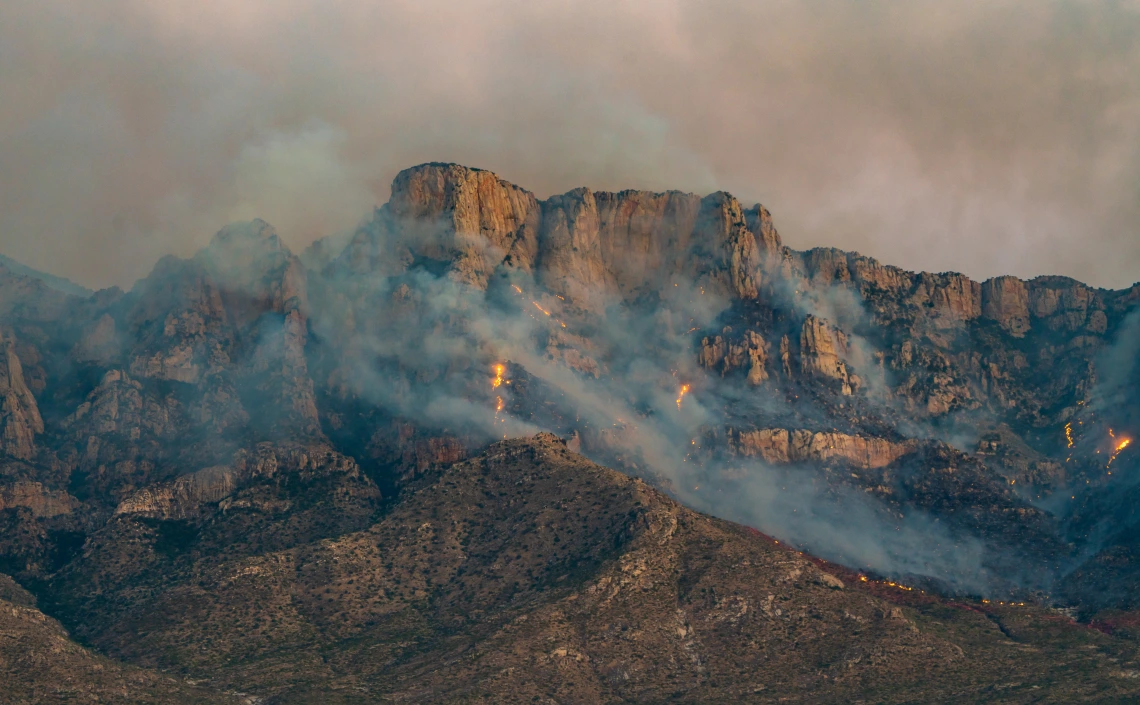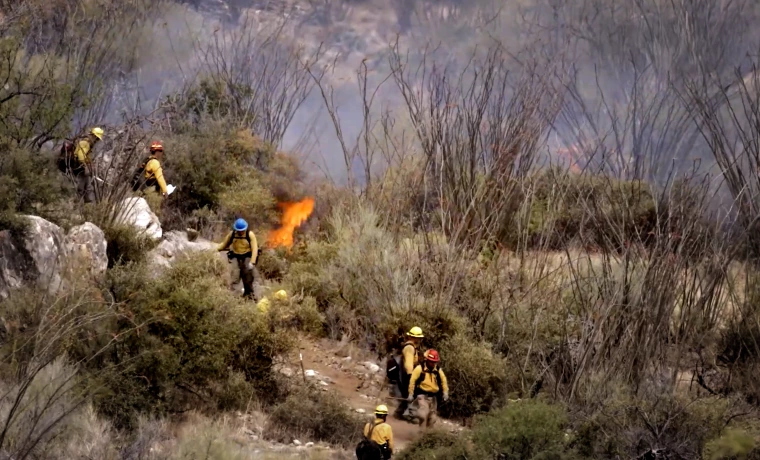Data shows wildfire activity has declined—and that’s a problem
Tree-ring data shows a decline in fire activity in North American forests, where its absence may contribute to more severe wildfires.

A fire in the Santa Catalina mountains in Tucson, Arizona.
Wildfires seem to dominate headlines every summer, raging across the Southwest, threatening homes, wildlife and forests. The common belief? Wildfires are on the rise.
However, new research suggests it’s a decline in fire that is causing fewer—but more devastating—fires.
A comprehensive study led by the U.S. Forest Service and researchers at CALES shows that, historically, wildfires burned much more frequently than they do today. In fact, fire activity across much of North America has been on the decline for over 140 years.
Using tree-ring data from more than 1,800 sites, researchers were able to map out centuries of fire history across the continent. The data, compiled from work done at the University of Arizona Laboratory of Tree-Ring Research, is one of the most extensive records of its kind.
It reveals that in many dry, forested areas wildfires occurred frequently. Fire has always been a key player in stabilizing forest ecosystems, said Donald Falk, a co-author of the study and fire ecologist at the School of Natural Resources and the Environment.
He said the fires helped clear undergrowth and maintain ecological balance. However, the prevalence of non-fire years has likely disrupted those natural cycles, leading to the accumulation of dry debris—which means that when wildfires do occur, they’re hotter and more destructive.
"As a result, today's extreme wildfires are more likely to harm people and communities, while exposing forests to damaging effects on soils and natural vegetation, from which they may not recover," Falk said.
The stories scars tell

Fire scars recorded on a tree.
When wildfires move through forests, heat penetrates the bark of trees, leaving fire scars on what’s known as the cambium layer. Over time, trees heal and continue to grow, forming new rings.
“Fire scars are kind of like scrapes on your skin. They heal over time, but since the tree keeps growing, it keeps that scar in its ring. That’s how we can tell exactly what year the fire happened,” said Falk.
If another fire occurs, the cycle repeats, etching fires into the wood like a time capsule. These scars enable scientists to determine how often fires have occurred in an area and when.
Using the North American Tree-Ring Fire Scar Network (NAFSN), a dataset spanning centuries and covering regions from Alaska to southern Mexico, researchers built a detailed picture of historical fire patterns across the continent.
This long-term perspective allowed them to compare today’s seemingly extreme wildfires, like the 2020 California August Complex and Arizona’s Bighorn Fire, to fire activity of the past.
"In recent history, wildfires seemed like they were unprecedented in terms of the area they burned. But, historically speaking, they were not," said Sean Parks, a research ecologist at the USDA Forest Service Rocky Mountain Research Station.
"There were several years between 1600 and 1880 where much more fire burned than what we experienced in 2020. This said, recent wildfires are unprecedented in terms of their adverse impacts to people, communities and forests."

Wildland firefighters battled the 2020 Bighorn Fire, which burned nearly 120,000 acres of the Santa Catalina Mountains near Tucson, Arizona.
The study also revealed that even though the amount of land burning today isn't totally unheard of in North America, the intensity of these fires is on a whole new level. They're burning hotter and doing more damage than before.
"Our forests are overgrown now due to 140 years of fire exclusion, but the more we can do to make our forests more resilient to that inevitable fire, the better off we're going to be," said Falk.
